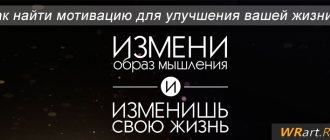You've probably met more than once people who amaze you with their developed imagination, extraordinary thoughts and judgments. They are creative individuals who are distinguished by their ability to generate fresh ideas. Perhaps you yourself are such a person?
The creative process requires solving problems using atypical, extraordinary methods. These can be either logical ways to solve a problem using analysis, synthesis, generalizing techniques, the method of induction and deduction, or heuristic ones, i.e. based on the work of intuition, on irrational approaches.
Photo by Florian Klauer on Unsplash
Heuristics as a science studies the essence of creative activity. Psychology explains the heuristic path of cognition as a way to obtain the answer to a creative problem through trial and error.
Heuristic cognition contributes to an individual’s better understanding of the essence of the problem and the search for ways to solve it.
In fact, a person either proves information experimentally or rejects it. Heuristics are subject only to human consciousness, that is, its methods cannot be used by artificial intelligence.
After all, creativity involves certain “deviations” in solving problems, but they lead to brilliant results.
In this article:
What heuristic methods can be used in practice How to apply heuristic methods in practice Several effective methods for finding a non-standard solution Heuristics and life
What heuristic methods can be used in practice?
Here are a few “working” schemes that may be useful:
- Brainstorming method.
The use of this method involves the introduction of group creative thinking. According to the American psychologist A. Osborne, there are people who are capable of generating original ideas, but they have difficulty analyzing them. And, conversely, some individuals find it easy to develop other people's ideas, while they have difficulty developing their own ideas.
Availability heuristic
The “brainstorming” method is the proposal of many different ideas, from which the most effective creative examples can be identified using analysis. Therefore, think original, ignoring the standards of thinking in order to obtain extraordinary solutions.
- Synectics method.
According to this method, which was formed as a result of the use of brainstorming in practical activities, selection occurs among group members (synectors).
At the first stage, knowledge is assessed and the individual’s experience is considered; the second stage – analysis of creative potential; the third stage is consideration of communication abilities. Going through these stages is necessary in order to make a choice of participants who will be involved in applying the synectics method.
Next, different versions of ideas are developed, which are formed thanks to knowledge and emotional experience. Such collective work generates original ideas, but group members may quickly get used to each other, which reduces the overall productivity of the method.
- Morphological box.
The method is based on the fact that creating a new one is a combination of an existing old one, or a combination of the known and the unknown. That is, in this case, a holistic complex of connections is considered, which is subjected to careful analysis.
- Inversion method.
Using this method, original and multidirectional ideas are born. In this case, phenomena are considered from all sides, using both logical and intuitive thinking, analytical and synthetic, statistical and dynamic methods. The use of this method requires certain experience, knowledge and skills, but the result of its use gives creative and unusual solutions.
Heuristics - as an effective way to solve management problems
Heuristics are a set of research techniques, a technique for asking questions and solving them; teaching method using leading questions.
Heuristic methods are based on principles that determine the strategy and tactics of decision makers when solving poorly defined and uncertain problems. They stimulate creative thinking in the decision-making process, allow you to generate new ideas, the use of which makes it possible to increase the efficiency of solving management problems. Let us briefly outline the heuristic methods most often used in decision-making practice.
Group work methods
1. Brainstorming method. There are situations when it is difficult for the decision maker to find a solution. In this case, you can use the brainstorming method. It allows you to identify and compare individual judgments, a range of ideas for solving a problem, and then make a decision.
There are several varieties of this method: direct brainstorming, reverse brainstorming, competition of ideas, etc. Let’s look at the first and second varieties.
1.1. Direct “brainstorming” is a form of collective generation of ideas to solve a creative problem. Its purpose is to select ideas.
Rules for participants:
- participants sit at the table facing each other;
- Disputes, criticism, and evaluations of what is said are prohibited;
- speaking time for a participant - 1-2 minutes;
- any ideas are expressed, even crazy ones;
- The number of ideas is more important than their quality.
Recommendations:
- ideas should be welcomed;
- it is necessary to believe in the solvability of the problem;
- it is allowed to ask questions that develop the idea;
- one should strive to solve the problem raised;
- all participants have equal rights;
- no need to think about the consequences of what was said;
- the group is not given a specific task, but the problem is characterized in general;
- Exchanging glances, whispering, and gestures that distract attention from solving the problem are undesirable.
The manager must:
- guide the discussion, ask stimulating questions;
- give hints, use jokes, remarks that create an informal atmosphere.
Restrictions and conditions:
- number of participants - 4-15;
- different levels of their education and specialization are desirable;
- it is necessary to maintain a balance in the level of activity and temperament;
- operating time - from 15 minutes. up to 1 hour
Ideas are selected by specialists - experts who carry out assessments in two stages: first, the most original and rational ideas are selected, and then the optimal ones, taking into account the task and the purpose of its solution.
1.2. Reverse brainstorming. The technology of this form of collective interaction does not involve the generation of new ideas, but the criticism of existing ones.
Rules for participants:
- • each idea is criticized, discussed and evaluated according to the criteria: compliance with initial requirements, the possibility of its implementation or lack thereof; implementation at cost, applicability in another area;
- • criticism is presented concisely and positively. Ideas that require a long time to discuss are considered later;
- • everyone can perform many times, but it is better in a circle;
- • duration of performance - 15-20 minutes;
- • it is advisable to hold the event in the first half of the day, in a calm environment.
A reverse brainstorming can be carried out immediately after a forward one, when counter-ideas are formed after the collective generation of ideas. In this case the following are produced:
- systematization and classification of ideas, as well as their grouping according to characteristics expressing general approaches to solving a problem;
- assessing ideas for feasibility and searching for obstacles to this;
- assessment of critical comments, selection of ideas and counter-ideas that have withstood criticism.
It is advisable to divide all participants into groups:
- idea generators (when a direct brainstorming is carried out);
- analyzing a problem situation and evaluating ideas;
- counteridea generators.
This method is based on the principles:
- interaction in the process of finding a solution;
- trust in each other's creativity and abilities;
- an optimal combination of intuitive and logical (the prohibition of criticism, critical analysis of ideas leads to inhibition of the left hemisphere processes of the brain and stimulation of the right hemisphere).
Advantages of the method:
- the ability to use all the specialists available in the management apparatus;
- improvement of socio-psychological intragroup processes.
Disadvantages of the method:
- allows you to find an idea in general form, without guaranteeing its thorough development;
- inapplicable when solving a problem that requires cumbersome calculations;
- requires a well-prepared leader who has the skills to organize mental-technical and psychotechnical processes in a group;
- It is not always possible to overcome the inertia of thinking (a consequence of the law of inertia).
1.3. Key question method. It is advisable to use the technology for its implementation to collect additional information in a problematic situation or to streamline what is already available when solving a problem. Asked questions serve as a stimulus for the formation of strategy and tactics for solving a problem, develop intuition, form thinking algorithms, guide a person to an idea for a solution, and encourage the correct answers.
It is known that even in ancient Rome, politicians were recommended to ask themselves a number of questions and answer them to collect more complete information about an event: Who? What? For what? Where? How? How? When?
Fundamental requirements for using the method:
- problematic and optimal. Skillfully posed questions need to reduce the problematic nature of the problem to an optimal level or reduce the uncertainty of the problem;
- fragmentation of information. Using questions, try to divide the problem into sub-problems;
- goal setting. Each new question should form a strategy, a model for solving the problem.
Recommendations for the manager:
- should stimulate thought rather than suggest an idea for solving a problem;
- questions should contain minimal information;
- When posing a series of questions, it is necessary to: 1. reduce the level of problematic nature of the task; 2. ask questions that are logically linked, interesting in form, and encourage the emergence of unexpected views on the problem being solved;
- it is necessary to stimulate both empirical, analytical (axiomatic) and dialectical (creative) thinking;
- The problem should be divided into subproblems and solution stages.
Recommendations for group members (management staff):
- remember the most typical questions and try to systematize them;
- ask yourself questions: 1. simplifying the problem; 2. allowing you to comprehend it from a new unexpected side; 3. stimulating the use of existing knowledge and developed skills; 4. dividing the problem into subproblems; 5. encouraging self-organization and self-control.
A step-by-step formulation of questions is recommended, stimulating the solution of the problem and increasing its certainty.
Sequencing. You need to find out:
- what is unknown;
- what is given;
- what is the condition;
- is it possible to satisfy the condition;
- whether the condition is sufficient to determine the unknown (or not, or excessive, or contradictory);
- make a drawing (drawing);
- enter suitable notations;
- divide the condition into parts;
- try to write them down.
Formation of an idea and development of a solution plan:
- how to find connections between data and unknowns;
- whether any related problem is known;
- Is it possible to use it?
- is it possible to use a method for solving it;
- whether some auxiliary element should be introduced to take advantage of the previous task;
- Is it possible to formulate the problem differently, more simply;
- Is it possible to come up with a more accessible task, more general, more specific, similar;
- Is it possible to solve part of the problem, satisfy part of the condition;
- whether anything useful can be extracted from the data;
- whether all data and conditions have been used;
- whether all the concepts contained in the problem are taken into account.
Implementation of the plan. When implementing a solution plan, control your steps:
- is it clear to you that the plan undertaken is correct;
- can you prove that it is correct?
Control and self-control of the resulting solution. Is it not possible:
- check the result;
- check the progress of the solution;
- get the same result differently;
- check the correctness of the result obtained;
- use the result obtained in some other task;
- solve the inverse problem of this one.
2. Method of free associations. It is noted that at the stage of generating ideas, when using new associations, the effectiveness of creative activity increases due to the emergence of new ideas. In the process of the emergence of associations, extraordinary connections are established between the elements of the problem being solved and the previous experience of individuals involved in collective work. This method and the technology for its implementation take into account the peculiarities of the activity of the human brain, which develops new ideas when new associative connections arise. So, if group members propose a word or concept, then it can become the basis for establishing associative connections.
For example, for some people, a word heard by chance, someone’s image, a picture, a melody gives rise to an idea that helps solve a problem. Thus, the publisher of one magazine had to reduce its cost. Painfully thinking, he tried to find an economical solution. Accidentally picking up a spelling dictionary, he drew attention to the word “paper,” and the question immediately arose: “Will the buyer and subscriber notice that the paper will be cheaper?” Having fixed his attention on the word “newspaper”, the publisher thought: “Why not print at least one issue of the magazine on newsprint?” He associated the word “cardboard” with the question: “Maybe the cover should be made from cheaper cardboard?” etc. The publisher grabbed a pen and began to write down words that gave a whole program of action.
Recommendations for the manager:
- do not rush to solve the problem (problem), but try to reformulate it repeatedly, look at it from the other side;
- propose a word, a concept, try to “evoke” some image that can become a stimulus for the formation of unexpected free associations that contribute to the emergence of an idea for solving a problem;
- at the initial stages of generating ideas based on the formation of associations, criticism is prohibited;
- the change of words, concepts, pictures that form associations must occur quickly.
Recommendations for group members (management staff):
- express, demonstrate everything that directly or indirectly causes the emergence of associations and ideas;
- record any ideas that arise from colleagues;
- after generating ideas, systematize and classify them;
- through critical analysis, select the best ideas.
3. Inversion method. When searching for an idea, a solution to a problem can often be found by changing the direction of the search to the opposite, contrary to the prevailing traditional views dictated by logic and common sense. Often in situations in which logical techniques and thinking procedures turn out to be fruitless, the opposite solution alternative is optimal. A classic example of inversion is the invention of the rocket by K. Tsiolkovsky. He decided that he had invented a cannon, but a flying cannon, with thin walls and releasing gases instead of nuclei. The method and technology of its implementation are based on the principle of dualism (duality), the optimal use of opposite (direct and reverse) procedures of creative thinking, and a dialectical approach to the analysis of the object of study.
Recommendations for the manager:
- encourage (stimulate) group members to repeatedly reformulate the problem in order to comprehend;
- Along with the direct task, put forward inverse ones;
- achieve dialectics of analysis and synthesis of reasoning;
- invite group members to use opposite procedures when solving a problem.
Recommendations for group members:
- remember that inversion is a search for ideas in directions opposite to traditional views, beliefs, common sense, formal logic;
- start solving a problem by trying to reformulate it;
- look for a counter-idea to every idea;
- When solving problems, try to use opposite procedures and means.
The method and this psychotechnology allow:
- develop dialectics of thinking;
- find a way out of hopeless situations;
- find original solutions of varying levels of difficulty.
The use of this form of working with people requires developed creative abilities, basic knowledge, skills and abilities.
4. Synectics method. It makes it possible to obtain the most original ideas by “training” participants to use the methods of analogy, intuition, abstraction, free thinking, the use of unexpected metaphors, and game elements during the “brainstorming” process, which allows a familiar problem in an unusual situation to be solved unexpectedly and in an original way.
Conditions and requirements:
- the problem is formulated in a general (figurative) form;
- the discussion should begin not with the problem, but with an analysis of its general features that characterize the current situation;
- It is not recommended to stop at one, even an original idea for a solution;
- if there are difficulties in solving a problem, you should return to the analysis of the situation in which the problem arose;
- the promotion of ideas and their selection depend on the skill, tact, resourcefulness of the leader, and his ability to stimulate the creative thinking of participants.
It is best to critically select and evaluate ideas for solving a problem in stages:
- analysis of each idea put forward;
- grouping and classification of ideas;
- critical analysis of the ideas put forward;
- selection of original, optimal solutions.
Recommendations for the manager:
- all recommendations of the methods of “brainstorming”, analogy, inversion, free association, etc. are applied;
- the optimal composition of the group is 3-15 people with different abilities, professional interests and training;
- it is necessary to encourage group members to repeatedly reformulate the problem;
- You shouldn’t be complacent when you get a successful idea;
- use questions like: “So what?”, “How do you imagine this?”, “What’s new here?”, “What if we do the opposite?”
Recommendations for group members:
- make maximum use of personal experience, knowledge, and skills;
- do not resort to premature, hasty formulations;
- when putting forward ideas, use analogies, metaphors, inversion, game elements, reasoning out loud;
- analyze an object from various positions: external and internal, scientific and everyday, in various situations.
5. Method 635. A group of six participants analyzes and formulates a given (problem) situation. Each participant enters three proposals for solving the problem into the form (within 5 minutes) and passes the form to his neighbor. The person filling out the form takes into account the proposals of his predecessor, and below them, in three fields, he makes three more proposals of his own. These suggestions may be used to further develop the recorded solutions, but new ones may be put forward. The process ends when participants have processed all forms.
Conditions: the recommended number of participants is 6. The time for the rotation phase may increase in subsequent phases. The technology allows you to receive up to 108 (6 x 3 x 6) proposals.
6. Delphi method. Externally, the method is implemented as a multi-level survey procedure with processing and reporting the results of each round to experts working in isolation from each other. They are offered questions and worded answers without argumentation. For example, answers may contain numerical estimates of parameters. The resulting scores are processed to obtain average and extreme scores. The experts are informed of the results of processing the first round of the survey, indicating the location of each rating. If the assessment deviates from the average value, the expert gives reasons for it.
Later (in the second round), experts change their assessment, explaining the reasons for the adjustment. The results are processed and reported to experts. When ratings deviate from the average, experts comment on them. The rounds are repeated until the scores become stable.
An iterative survey procedure with the reporting of processing results and their argumentation encourages experts to critically reflect on their judgments. During the survey, the anonymity of the experts' answers is maintained, which eliminates conformism (suppression of one opinion by another, more authoritative one).
Individual work techniques
1. Technique “Waiting for inspiration.” When solving difficult problems, when it is not possible to concentrate efforts, it is advisable to alternate intense intellectual work with relaxation, disconnecting consciousness from the task. However, before going to bed, you should remember the task again and think about it until you fall asleep. In the morning or even at night, sometimes unconsciously, when you wake up, you can get up and solve a difficult problem. The technique is based on “drowsy states” that occur during the period of falling asleep (E. Coue’s method) and allow you to “set tasks” for your brain. Psychotechnology takes into account that with the transition to natural sleep and the “turning off” of consciousness, a person’s unconscious is, as it were, programmed to solve some important (urgent) problem.
2. Thinking technology: “Metchet’s method.” It is recommended to use the following "modes of thinking" to create, control and apply a way of thinking when solving a problem:
- strategic schemes (act in accordance with the strategy, create it);
- images (represent the problem in the form of diagrams, drawings);
- in parallel planes (observe your thoughts as they intersect);
- from different points of view;
- in basic elements (options of decisions, judgments, concepts, tactics, relationships, obstacles).
Technology can be used to organize the individual thinking of a decision maker, as well as to improve the efficiency of his collaboration with staff.
3. Analytical technique: “Method of eliminating hopeless situations.” Using this method, it is possible to simulate the adoption of various management decisions, consistently eliminating factors leading to undesirable predicted consequences. This is achieved by varying solutions: adapt, modify, strengthen, weaken, replace, remake, combine, use something differently.
Viktor Kolpakov, Candidate of Military Sciences, Professor of the Department of Personnel Management of the Interregional Academy of Personnel Management (Kiev, Ukraine), retired colonel.
Source: Elitarium.ru
How to apply heuristic methods in practice
If you are engaged in creative activities, then the following rules will be useful to you for the development of creative thinking and personality formation:
- Notice the external environment. We often do not notice much of what surrounds us. Particular attention should be paid to details.
- Study several areas of knowledge. This could be mathematics, music, painting, poetry - you should not settle on any narrow specialization, consider all areas of knowledge to develop creative potential.
- Establish associations. While studying the world around you, find new ways to use objects and things.
- Non-standard solutions. Focus on the problem, but don't look for standard solutions.
- Ideas and laughter. Laughter evokes a positive response. If your idea makes you laugh, then its application will be productive.
- Ideas and life. A creative idea must be brought to life. Only practice can confirm the innovative value of theoretical originality.
Reviews and comments
If this material was useful to you, and also if you want to share your own experience or ideas about heuristics, its methods, and their practical application, leave a comment in the special field below.
We also recommend reading:
- Storytelling
- Invention: a selection of useful materials
- Abduction: the search for truth through the expansion of consciousness
- Deep Learning: What is the essence of the deep learning method?
- Fermat's theorem and 380 years to prove it
- Secrets of inventors: a selection of useful materials
- Representativeness heuristic
- Scientific thinking: meaning, features and methods
- Theories of thinking
- TRIZ and design thinking in everyday life
- Combinatorial thinking
Key words:1Cognitive science
Several effective methods for finding a non-standard solution
Family, personal life, business - situations often arise in your life that stand before you like an insurmountable wall. If a problem arises, then it needs to be solved, and preferably quickly and easily.
To do this, you can use the well-known brainstorming technique. In practice, its use is that you take several different objects and try to associate them with your problem. Write down everything that comes to mind - it all relates to solving your problem. Analyze the results and you will find a creative solution.
Use another effective way to solve creative problems. This is the understanding that you are not solving a problem, but setting a goal for yourself. That is, you have a goal instead of a problem. When you clearly define your goal, creative solutions will certainly appear.
Try using the “transformative thinking” method. A set of questions is asked. By answering them, you can derive a creative thought and idea. So, we offer questions:
- What other way can this process, technique, technology be replaced?
- Is it possible to compare this process, activity, approach, technique with something similar?
- Is it possible to change something: is it possible to add, emphasize or abandon something, can it be increased or decreased?
Image by Alexandr Ivanov from Pixabay
- Is it possible to look at a problem from a different angle or use it to solve a different problem?
- What can be eliminated without significant losses?
- Is it possible to reformulate the problem, to transform it?
By answering these seemingly simple questions, you can step by step come to new original solutions. And the essence of the technique lies in a new, not narrow, but broad view of things and situations.
Heuristics: history and modernity
Heuristics (from the ancient Greek ευρίσκω - “I look for”, “I open”) is a set of logical techniques, methods and rules that facilitate and simplify the solution of cognitive, constructive, practical problems.
Heuristics are the moment of discovery of something new, as well as the methods that are used in the process of this discovery. Heuristics is also called a science that deals with the study of creative activity. In pedagogy, this category refers to a teaching method. As a science that studies creative, unconscious human thinking, heuristics have not yet been fully formed. Its subject and methods are closely related to psychology, philosophy, physiology of higher nervous activity and others. We will not focus on the application of this term in specific branches of science, but will make an attempt to find out what judgments, phenomena, meanings have historically been in.
According to legend, Archimedes, while taking a bath, discovered one of the main laws of hydrostatics - the law of displacement (later named in his honor). Following his discovery, following his discovery, he shouted, “Eureka,” which is why the word was associated with the discovery. Let’s not judge the veracity of this story; something else is known for certain. It was in Ancient Greece that a learning system called heuristics originated. Its author was Socrates, and it boiled down to Socratic conversations (dialogue, in pedagogy - the Socratic method) - a conversation between a teacher and a student, as a result of which, by asking leading questions, the student independently comes to the desired result, finds a solution to the problem, which also allows for the development of critical thinking. At the same time, the concept of “heuristics” was also used in the treatises of ancient Greek mathematicians (in particular, Pappus of Alexandria, to whom many attribute the first mention of this term), based on which one can judge the rather broad basis of the subject of this field.
In the Middle Ages, a significant contribution to the development of heuristics was made by Raymond Lull, who is known for his idea of creating a machine for solving a variety of problems based on a universal classification of concepts.
Until about the middle of the 19th century, ideas about heuristics as a method of creativity and cognition in general were reduced to the already mentioned trial and error method. Wikipedia provides interesting statistics: Thomas Edison, while working on an alkaline battery device, conducted about 50 thousand experiments!
The separation of heuristics from the system of logical knowledge began in the 1850-1860s. Before this, attempts to isolate heuristics into a separate science were made by Euclid, R. Descartes, and G. Leibniz. But it was only during this period that an approach to heuristics began to take shape in science as a unique interdisciplinary method with its own rules, as Canadian scientists M. Romanisia and F. Pélatier, who are developing this issue, believe.
The further development of heuristics is connected with developments in the field of other sciences, primarily the psychology of creativity and the physiology of the brain. Modern psychology and heuristics are closely related: they focus on the task of determining the mechanism by which a person makes decisions in conditions of insufficient information. Imperfection of heuristic methods leads to cognitive errors, which in psychology are commonly called cognitive distortions.
In the twentieth century, the main successes in the development of heuristics as a science were associated with the successes of psychologists. Thus, the role of heuristics in decision making was one of the first to be studied by Israeli psychologists A. Tversky and D. Kahneman in 1973, but the greatest achievements in the field are associated with the name of Nobel laureate G. Simon. He introduced the concept of limited reality, which reflects the nature of the heuristic activity of the human brain. The essence of the idea is that a person’s decision-making is influenced by such factors as the limited available information, the cognitive limits of the mind and time.
The teaching is so progressive that in the process of its development in modern psychology the concept of “availability heuristic” has been established, which explains patterns of human behavior. If we omit the scientific definition of this term and formulate it in simple words, then the availability heuristic is an assessment of the reality of the occurrence of a situation or phenomenon based on the ease of providing examples for confirmation. The media plays an important role in this process. For example, after seeing news about a crisis and job losses, a person may begin to think that the trend is global and will worry more about it, sleep poorly, cope worse with their responsibilities, and as a result will be fired. After reading an article in the newspaper about a lottery winner, you may get the wrong impression that this happens much more often than everyone is used to thinking, which will then lead to a desire to spend more money than usual on lottery tickets. The availability heuristic is a two-sided phenomenon that can be both useful (in terms of speed and response to a problem) and negative (due to the fact that a misconception may arise that will lead to insufficient awareness or, conversely, significant hyperbolization).
Heuristics and life
Heuristic techniques for creative thinking are taught gradually. They do not come to a person since childhood. If you don't have creative thinking, there's no reason to worry. Creative thought can be developed. To do this, you need to set goals and clearly understand what you are striving for and what you are achieving. If the goal is defined, then after it you will receive motivation.
Heuristic teaching has become a progressive part of modern psychology. Using heuristic methods, a person sets goals in the presence of incomplete information and in the absence of a specific program for solving a creative problem.
Heuristics is a young science, so answers to many questions have not yet been found. However, its methods are effectively used by many people whose lives and professions are closely connected with creative activity.
Heuristic methods help make non-standard creative decisions in the practical sphere, improve the quality of life, expand consciousness and the cognitive boundaries of the human mind.
History of the development of heuristics
Socrates is considered the founding father of the very essence of heuristics. He had a special approach when teaching his followers. In order for a person to understand the essence of an object or phenomenon, the great philosopher used leading questions. This allowed the student to build a logical chain and “realize” the essence of things in the correct sequence. Such dialogues were called “Socratic conversations”; in the opinion of many, they formed the basis of heuristic methods.
The Socratic method has been repeatedly described and developed in the works of many famous figures. Among them: Archimedes, G. Galileo, F. Bacon and others. Heuristics from a pedagogical point of view were considered in their works by J.-J. Rousseau and L.N. Tolstoy. Both authors came to the conclusion that a child should learn new things through the prism of his own experience. At the same time, the student must have freedom of choice when solving assigned problems. The same point of view was shared by S. Frenet, S. T. Shatsky, P. F. Kapterev and others.
Heuristics received a new impetus for the development in the last century, facilitated by the invention of the electronic computer. The creation of computers helped to simplify and speed up the search for the right solution, because the computer, based on the models and algorithms received from the programmer, could select the correct answer.










